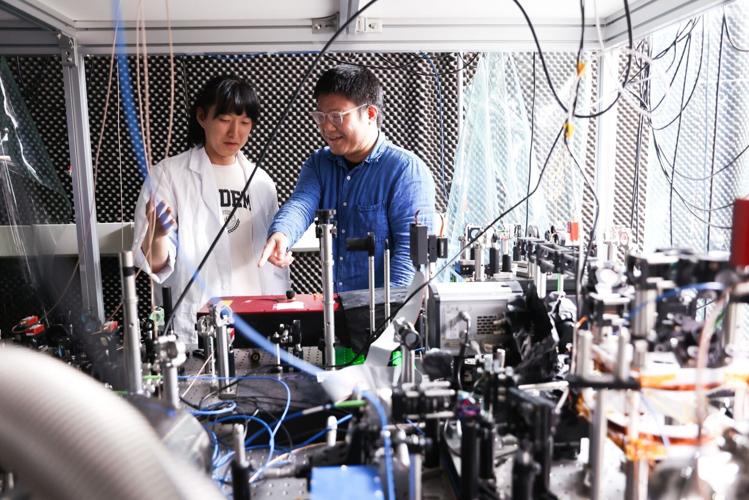In an impressive scientific feat, researchers have achieved the ability to throw and catch individual atoms using light. This groundbreaking study, published in the journal Optica, could have significant implications for the development of quantum computers.
“The freely flying atoms move from one place to the other without being held by or interacting with the optical trap,” research team member Jaewook Ahn from the Korea Advanced Institute of Science and Technology explained in a press statement. “In other words, the atom is thrown and caught between the two optical traps much like the ball travels between the pitcher and a catcher in a baseball game.”

To accomplish this feat, the researchers used optical traps, which involve a highly focused laser beam capable of manipulating tiny objects. By releasing chilled rubidium atoms from one trap and catching them in another, the scientists were able to throw the atoms over a distance of 4.2 micrometers and at speeds of up to 65 centimeters per second.
This breakthrough could be instrumental in the development of quantum computers, which rely on the quirks of quantum physics, including superposition, to solve problems that are beyond the capabilities of classical computers. As researchers continue to pursue the development of functional quantum computers, the use of optical traps could prove to be a valuable tool.

The implications of this study extend beyond the realm of quantum computing. The ability to manipulate individual atoms using light could have numerous applications in other areas of science and technology, such as in the development of new materials with specific properties or in the creation of more advanced sensors.
The researchers behind this study have opened up a new avenue for exploring the behavior of individual atoms and how they can be manipulated for practical applications. While there is still much work to be done, this study represents a significant milestone in the ongoing effort to harness the power of quantum physics for technological advancement.


